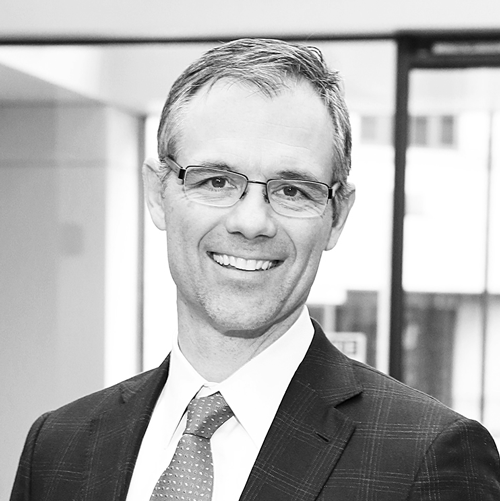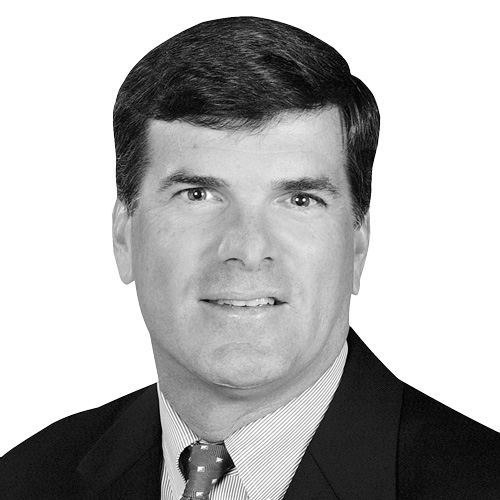Athletes, of both the elite and weekend-warrior varieties, often push their bodies to the limit and beyond, at times resulting in injuries that require surgery and/or physical therapy. At the Steadman Clinic and the Steadman Philippon Research Institute (SPRI) in Vail, Colorado, a team of world-class physicians and researchers are working together to provide patients with the best orthopedic care to prevent and treat injuries.
Yet its excellence in orthopedic care is only one part of the Steadman Philippon story. The visionary leadership provided by Dr. Marc Philippon, managing partner of the Steadman Clinic and cochairman of SPRI; Dr. Johnny Huard, chief scientific officer of SPRI; and Dan Drawbaugh, CEO of the Steadman Clinic and SPRI, is set to accelerate advancements in regenerative medicine.
Drawbaugh has helped lead the company’s mission to keep people active by ensuring patients receive best-in-class sports medicine from the surgical, patient-care, and research disciplines.
“The Steadman Philippon Research Institute has been focused on evidence-based medicine since it was founded,” Drawbaugh explains. “Through Dr. Marc Philippon’s leadership, SPRI is entering into a new era with regenerative sports medicine. We recently added Dr. Johnny Huard, one of the country’s foremost researchers working in regenerative medicine, to the team.”
Huard, a longtime colleague and friend of Dr. Philippon’s, came to Vail in May 2015 to serve as the chief scientific officer for SPRI and the director of SPRI’s Center for Regenerative Sports Medicine.
“The way we think of it, [we’re] taking what’s developed at the scientific bench and bringing it to the bedside,”
His recruitment is significant, as Huard’s many accomplishments include advancements in stem-cell research—particularly for the use of muscle-derived stem cells to help the body heal itself. He is one of the top-funded researchers in the area of regenerative medicine in the country. By recruiting Huard, the Steadman Clinic is able to apply his research to sports medicine.
“The mission is to pursue new discoveries in scientific research to help people live longer, live better, and live stronger,” Drawbaugh says. As part of that mission, the Steadman Clinic and SPRI have been designated as a national medical providers for the US Olympic Committee.
“Our surgeons are dedicated to the young Olympic athletes and to Team USA,” Drawbaugh says. “We see athletes across every sport and have a tremendous relationship with, and a dedication to, them.”
Prior to joining SPRI, Huard worked closely with Philippon and others who have enjoyed professional associations with the US Olympic Committee, as well as the International Olympic Committee.
While visiting the Mayo Clinic, Philippon decided to check on his old friend, and jokingly asked Huard if he knew of any good doctors in the field of regenerative medicine. Due to their shared history and friendship, Philippon gave the Clinic and SPRI the opportunity to pursue a relationship that would allow Huard to focus not only on his basic science, but also on the clinical translation of that science.
“The way we think of it, [we’re] taking what’s developed at the scientific bench and bringing it to the bedside,” Drawbaugh says. “The Steadman Philippon Research Institute had been focused on evidence-based medicine and clinical translation. Dr. Philippon is now moving the research into regenerative and translational medicine.”
Another very strategic component includes SPRI’s partnership with the University of Texas Health Science Center at Houston (UTHealth). Huard is a full-time faculty member at UTHealth and does the majority of his basic scientific research there, while the translation to clinical practice happens at SPRI.
“I think of our partnership with UTHealth as differentiating and one-of-a-kind,” Drawbaugh notes. “You have the majority of the basic science occurring at UTHealth, and SPRI leading the clinical translation. Information and knowledge gathered is then shared from the bench to the bedside, and vice versa, for continuous clinical improvement and research initiatives.”
Around the same time, the Steadman Clinic and SPRI formed a ten-year research partnership with the Vail Valley Medical Center (VVMC). The mission of the partnership is to continue to advance Vail’s global prominence in sports and orthopedic medicine through investments in research capabilities and new scientific research facilities.
The agreement enables the organizations to expand the role of SPRI’s Center for Regenerative Sports Medicine. SPRI and VVMC will collaborate with the top academic scientists and leading orthopaedic surgeons from around the world to fast-track the way people return and recover from injury.
Ultimately, there will be six focused joint-preservation centers under the SPRI umbrella: ones for hip preservation, knee preservation, foot and ankle preservation, shoulder preservation, hand and wrist preservation, and one for neck and spine preservation.
“We believe the future is very promising with leveraging an individual’s own stem cells to preserve the health and wellness of the individual,” Drawbaugh says.
Although the Steadman Clinic and SPRI focus on sports medicine and treat many young athletes, they apply their research to people at all stages of life. If they can repair muscle torn as a result of an injury, there’s no reason the same research can’t be applied to those who lose muscle or suffer joint pain as a result of the degenerative nature of aging.
“You’re not going to reverse the aging process, but you will be able to live longer, remain active, and achieve a high quality of life,” Drawbaugh says. “That directly relates to the mission of the Steadman Clinic and the Steadman Philippon Research Institute: keep people active.”

